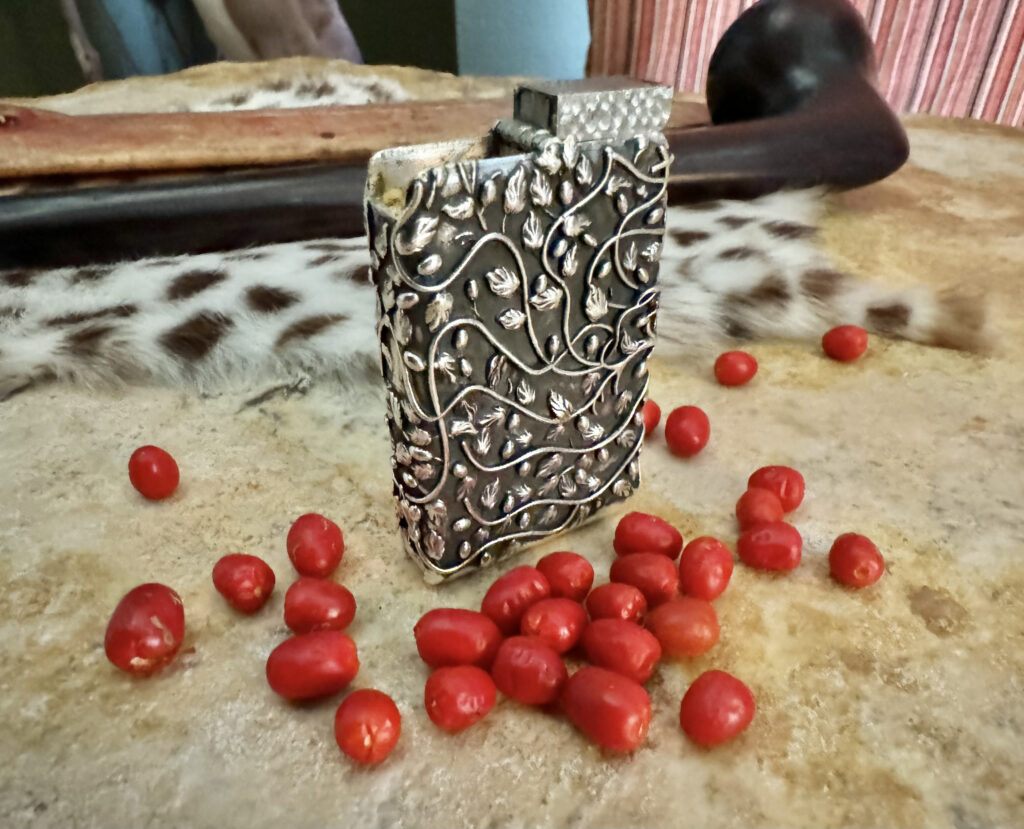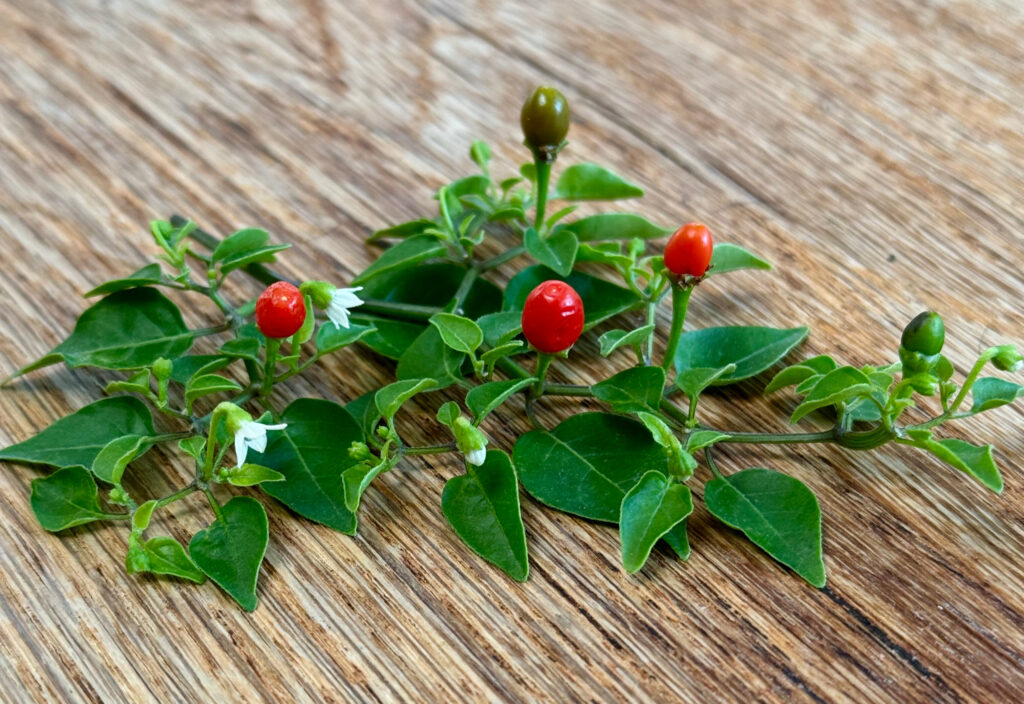The Small Native Texas Pepper That Packs A Punch!
Written By: Ross Studer, Partner & Sales Associate

The small native chili of the South Texas and Northern Mexico regions, known to the general population as the Chiltepin, has been a fixture to most tablescapes of this region for centuries. In more recent decades it has become a way of life for the modern-day South Texan. It isn’t uncommon for an amigo to whip out his pocket-size chili shaker or tin from his pocket and spice up his meal.
The history of the Chiltepin goes back much further than a few centuries. A study released in 2014 indicates that the Chiltepin may have been the first domesticated pepper in east central Mexico dating back to 7,000-9,000 B.C.1
In South Texas there has been a battle brewing for generations on how to pronounce and spell the name of this native pepper (not to mention more granular discussions around species and sub-species). Ranchers and pepper bellies from all counties of South Texas have their own long-held beliefs on what is correct regarding the Texas State Native Pepper.
Some say the Chili “Pequin”. The spelling certainly comes with the characteristic of being a small or little pepper, or Pequeno “small”, hence the “e”.
I prefer the Chili “piquin” version because I subscribe to the theory that the pepper is hot or “picosa”; hence the “i”.
The other spelling, and probably the most common from the South Texas slang terms for the chili is the Chilipitin. This is closest to the origin of the word but nonetheless is still slang. In fact, there is a Chilipitin Cemetery (circa 1877) in Charlotte, TX that is located on Chiltepin Creek. Tell me that isn’t a battle! Republic Ranches has a listing on the creek and after extensive internal debate decided to call the ranch Chilipitin Creek Ranch.

For the purposes of this article we will go with the spelling, Chiltepin, the name the Azetecs termed millenniums ago. It was derived as a compound word combining chil-, or “chile pepper”, and -tecpintl, or “flea” translating to “flea chili ” due to the pepper’s small size.
Regardless of the spelling, and much less argumentative, are the many ways to enjoy the Chiltepin. Fresh off the bush, dried and ground for a light dusting, dry carried and crushed over your meal, or in a vinegar based sauce? Whether cooking with it or garnishing a dish, there are many ways to appreciate this native Texas pepper. It has quick to the punch spice with a diminishing heat that provides relief that is addictive and hard to beat.

Reference:
1. Kraft, K. H., Brown, C. H., Nabhan, G. P., Luedeling, E., Luna Ruiz, J. D. J., Coppens d’Eeckenbrugge, G., Hijmans, R. J., & Gepts, P. (2014). Multiple lines of evidence for the origin of domesticated chili pepper, Capsicum annuum, in Mexico. Proceedings of the National Academy of Sciences, 111(17), 6165–6170.